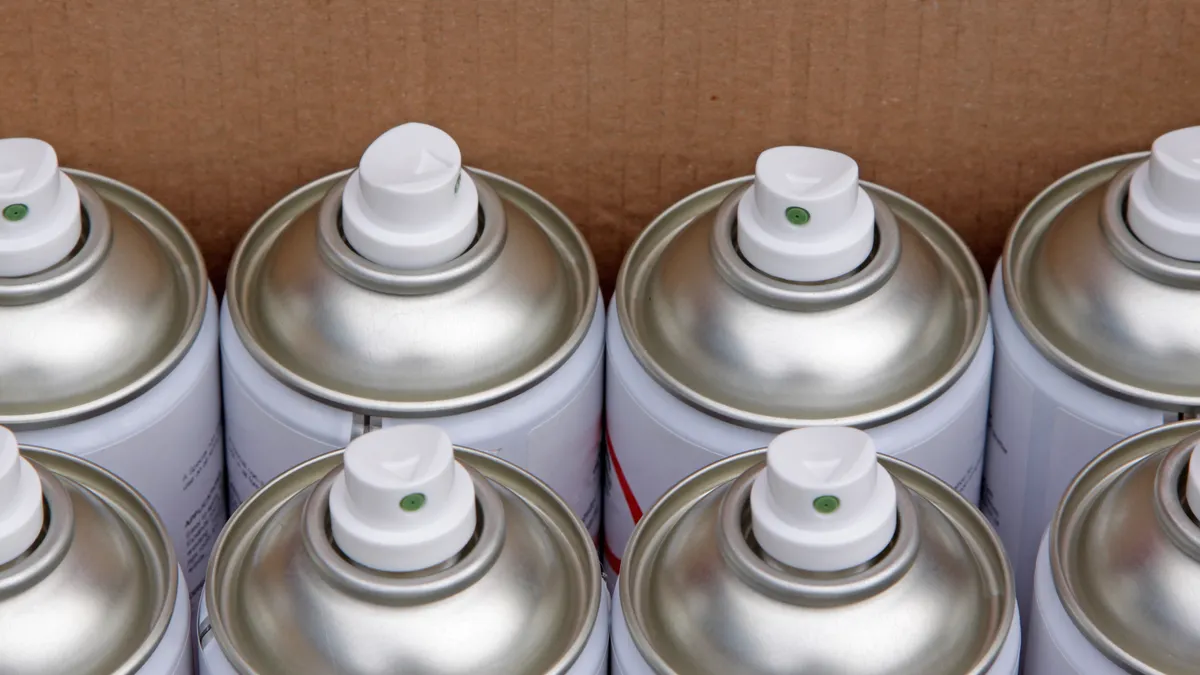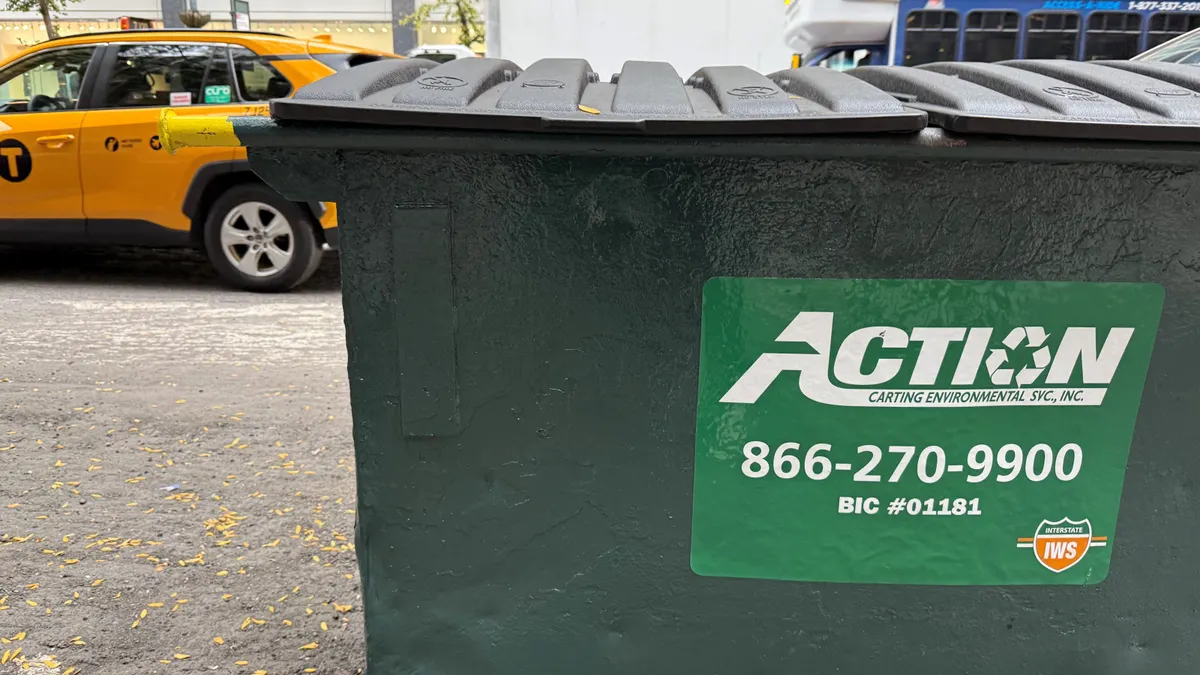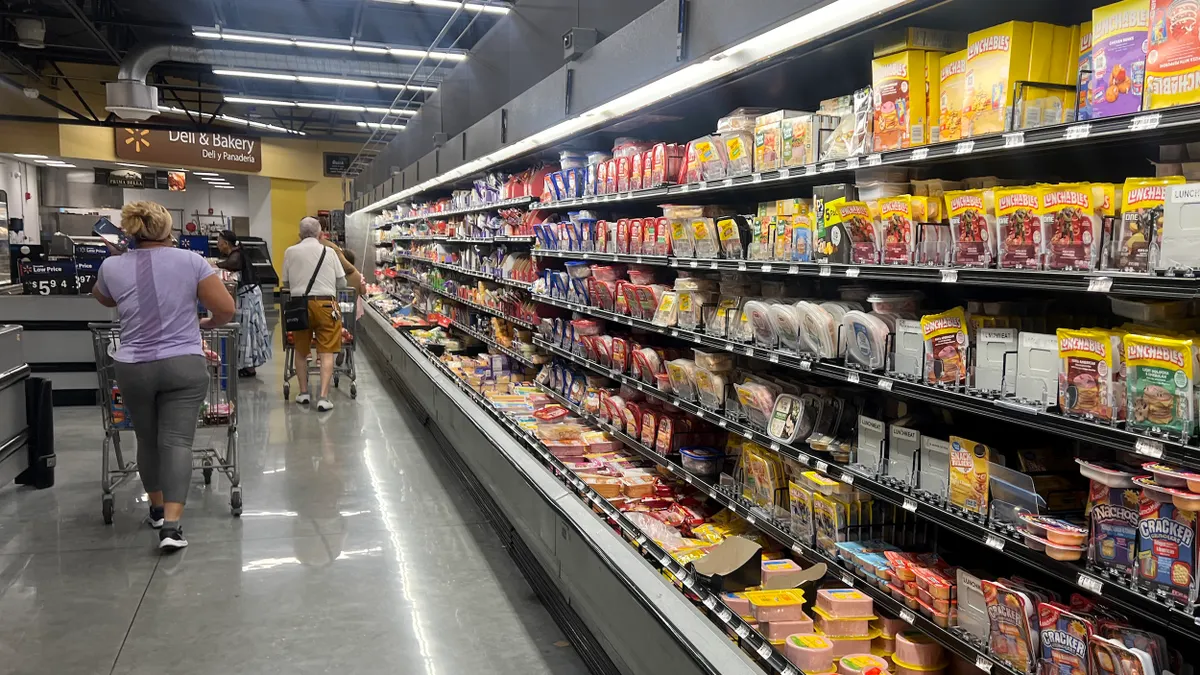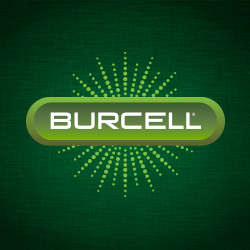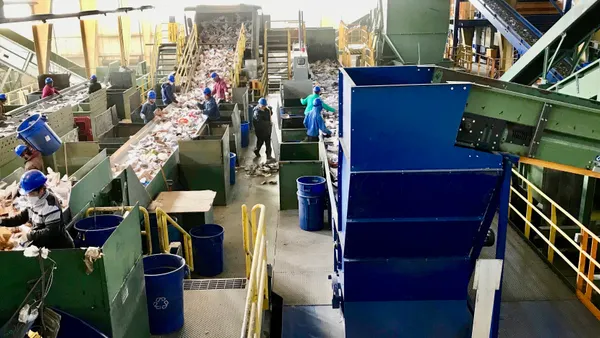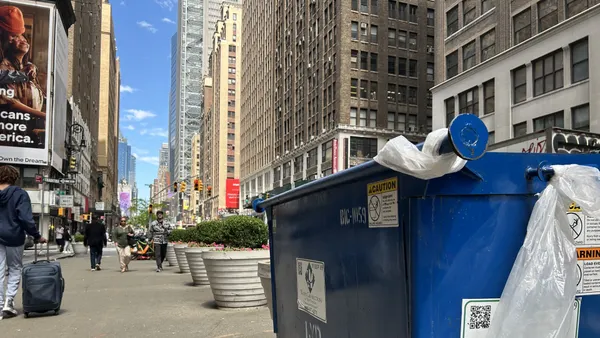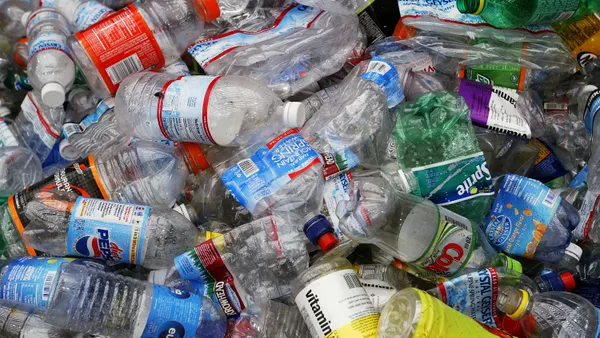Dive Brief:
- How2Recycle is redesignating the recyclability status of certain packaging types and reviewing additional formats this year.
- The program recently announced that it’s upgrading composite canisters with steel bottoms in the U.S. from “not yet recyclable” to “check locally.” Meanwhile, it’s downgrading aluminum and steel aerosol cans in the U.S. from “widely recyclable” to “check locally.”
- How2Recycle is considering demoting the recyclability status for three additional packaging formats in the U.S. later this year: Single-use polypropylene coffee pods as well as bulky rigid plastics may be downgraded to “not yet recyclable,” while HDPE trays and thermoforms may be switched to “check locally.”
Dive Insight:
How2Recycle is an informational label program that’s voluntarily used by hundreds of brands in North America to signal to consumers whether and how to properly recycle a package.
While some of the thresholds differ in Canada, in the U.S. the How2Recycle system currently categorizes packaging using four different labels and criteria:
- “widely recyclable,” meaning at least 60% of Americans can recycle such packages through curbside or drop-off programs
- “check locally,” indicating that less than 60% of Americans can recycle such packages through curbside or drop-off programs
- “not yet recyclable,” meaning less than 20% of Americans can recycle such packages with this label, or there are significant challenges in sortation, reprocessing or end markets
- “store drop-off,” used on PE film packages collected by participating retail stores for plastic film collection
When considering designation changes, How2Recycle takes into account applicable laws, collection systems (access and acceptance), sortation, technical reprocessability and end markets. How2Recycle now leverages The Recycling Partnership’s National Recycling Database as its primary source of acceptance data.
“We've been evolving as a program, and we get more and more detail in terms of how we make the assessments,” said Karen Hagerman, director of How2Recycle.
Recycling options for composite canisters with steel bottoms, sometimes known as paper cans, have been advancing, according to How2Recycle, which credits manufacturer Sonoco with helping to improve recycling outcomes.
“Sonoco is an example of a member who's been very actively involved in not just getting us the data, but also going out and doing community work to increase the level of acceptance around the U.S., and I think it's a great example of how our members can actually influence increasing recyclability for different formats,” Hagerman said.
Sonoco, which has powered the Paper Cans Can campaign, celebrated the upgrade for its EnviroCan Metal Bottom rigid paper container. The company said in a press release this week that the packaging’s paper container body is made of 100% recycled fiber, 90% of which comes from postconsumer resources.
“Securing the pre-qualification for the EnviroCan Metal Bottom is the result of years of data and evidence collection as well as collaboration with recyclers,” said Sabrina Dixon-Ridges, director of global operational sustainability at Sonoco, in a statement.
On the flip side, How2Recycle questioned the widespread recyclability of aerosol cans. The Recycling Partnership database shows a 39% acceptance rate for aluminum aerosol containers across all states, for single-family and multifamily households in a community where the primary program accepts the category.
“The driving decision behind downgrading aerosols is that we decided just to look at the explicit acceptance data,” programs that specifically note aerosols for acceptance, explained Hagerman. Such cans are explicitly prohibited in some programs, and there are some questions and concerns around the category, including hazards they can potentially pose at MRFs when they aren’t emptied. As such, “the most responsible way to assess it is based on explicit data,” she said.
Scott Breen, senior vice president of sustainability at the Can Manufacturers Institute, said the group is “not aware of any new data information that tracks with any increase in fire risk.”
Molly Blessing, vice president of sustainability and product stewardship at the Household and Commercial Products Association, said the explicit approach leaves out smaller communities that just talk about accepting metal cans broadly.
CMI and HCPA have teamed up on the Aerosol Recycling Initiative to achieve 85% recycling access rate for aerosol cans in the U.S. by 2030. They reported last year that 62% of people in the U.S. have access to a recycling program that accepts aluminum aerosol containers; the figure was 61% for steel aerosol containers.
Blessing called the label downgrade “disheartening.”
“We do believe that ‘check locally’ can contribute to consumer confusion, because it's not giving them clear direction as to what to do with the can. In particular for aerosols, that's a concern because aerosols are one of those sort of more niche material types that not every municipality communicates about clearly,” she said. “Since we're having this conversation about implicit versus explicit acceptance and how that can be open to interpretation, the more you leave things not said, I think the worse the problem gets for aerosols in particular.”
The Aerosol Recycling Initiative said it is now working with TRP to better understand their data.
The process for actually rolling out those changes on packages can be a lengthy one.
“Our advice is that this new label is in line with the most current data that we have, and it is the best way to communicate recyclability to consumers,” said Hagerman. “We try to give heads up for a lot of these things as well, because we know the printing timelines are often several months to years out.”
This could take anywhere between 90 days to two years depending on how much inventory is in the marketplace, said Paul Nowak, executive director of GreenBlue, the nonprofit supporting How2Recycle.
How2Recycle intends to offer stronger recommendations about how long the process should take. And as labeling policy advances, it’s likely that going forward brand owners will have legal and regulatory teams more involved, Nowak said.
In its update, How2Recycle also noted that it previously reviewed HDPE and polypropylene squeeze tubes, polypropylene and PET beverage cups and aseptic and gable top cartons; the program opted to not change the status for any of them (which are designated as not yet recyclable, check locally and widely recyclable, respectively.)
Nowak also shared an update on How2Recycle’s proposed label design update.
“We're finalizing the designs based on all the policy feedback that we've received,” he said. “And in parallel to that, we're working on automating our platform system to be able to handle the amount of change a brand refresh would entail.” How2Recycle is targeting a broad change over in the third quarter of 2025.


